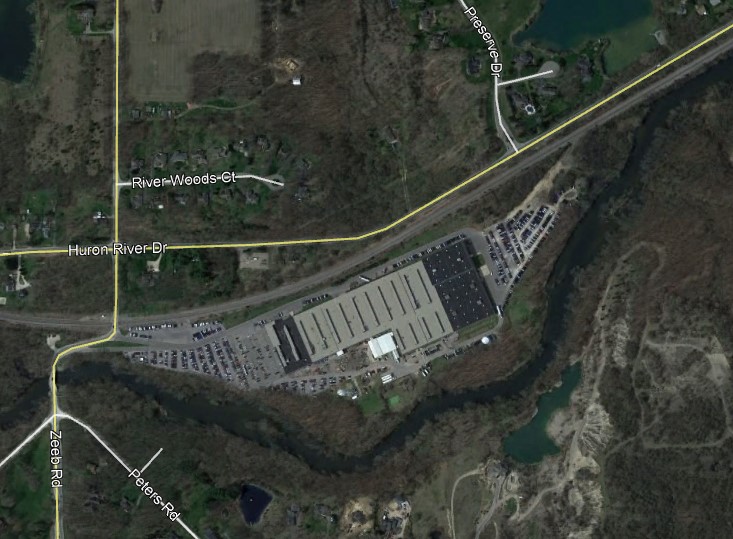
PFAS chemicals have been confirmed at concerning levels at a former Chrysler manufacturing facility along the Huron River in Scio Township. The site is an active hazardous waste cleanup site that was already under scrutiny. Given the facility was once used for metal plating, a common culprit for PFAS use, HRWC and others suspected the site of contamination.
Additional testing conducted since last spring has revealed high PFAS levels in the groundwater at the site. One test indicated very high levels—1700 parts per trillion (ppt)—but that test result may not be representative of magnitude of contamination. Other test results were elevated but much lower, and more testing will be required to understand the extent of the problem.
The facility is on the river and we now know PFAS are making their way from the groundwater to the river at levels above the state-allowed threshold of 11 parts per trillion (ppt). That’s concerning because the contamination is entering the river upstream of the drinking water intake for Ann Arbor at Barton Pond, but it’s unclear if contamination from the site is affecting PFAS levels at the intake. Total PFAS levels in Barton have slightly increased through 2019, but PFOS and PFOA levels, the two chemicals in question here, have remained low after filters were installed at a major contamination source to the river in Wixom.
PFAS was found in a drinking water well used by employees at the former Chrysler facility. The reported level is currently below the proposed drinking water standards for PFOS and PFOA, but HRWC and the Washtenaw County Health Department are interested in seeing additional test results of the drinking water supply.
According to state officials, it’s unlikely that private residential wells near the manufacturing site have been affected by this source. Wells in the area are likely protected by a subsurface clay layer that would inhibit PFAS from moving from the river to well water, and the contamination making it to the river is probably being diluted quickly. The Department of Environment, Great Lakes and Energy (EGLE) currently does not have plans to test nearby residential wells. Residents concerned about PFAS contamination in their wells and that want support from the state should contact the Washtenaw County Health Department. For residents that want to pursue testing immediately, the state’s MPART website provides guidance.
Because the level of contamination exceeded the 11 ppt threshold, EGLE will take further monitoring and remediation actions. This location is classified as a (Part 111) hazardous waste site, which gives the state greater enforcement authority compared to other (Part 201) contaminated locations in the watershed.
For more information on PFAS in the Huron River watershed, visit hrwc.org/pfas.



